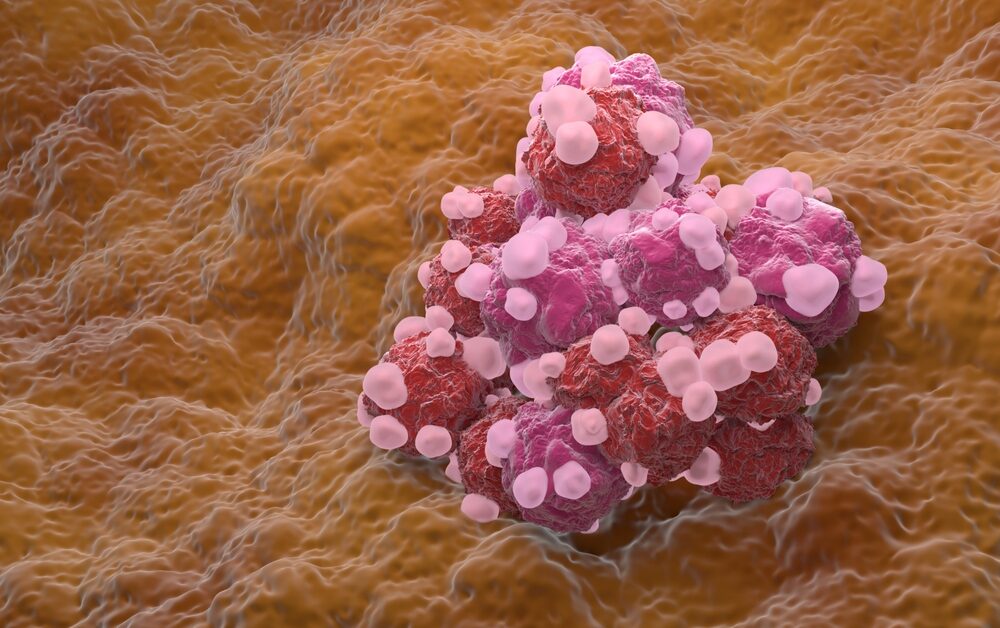Newsletter Signup - Under Article / In Page
"*" indicates required fields
New study is increasing knowledge of why some women with the most lethal form of ovarian cancer respond much better to treatment than others.
Researchers at Imperial College London in the U.K. have confirmed that the tumors of some women with high-grade serious ovarian cancer (HGSOC) contain a type of lymphoid tissue – known as tertiary lymphoid structures, or TLS – and that the presence of this tissue gives women a significantly better prognosis. They have also identified genes in HGSOC that are important for TLS formation and function.
The lymphatic system helps fight off infection by producing immune cells such as T cells and antibodies. But TLS, which are in some ways similar to ‘normal’ lymphatic tissues, are being found by researchers in different types of tumors.
The study reveals TLS improve outcome in women with high grade serious ovarian cancer
By analyzing tumors from 242 HGSOC patients before treatment and comparing them to progression free survival rates, the researchers found that women that had TLS in their tumors had a significantly better outcome. The study, published in Cell Reports Medicine, and funded by the National Institute for Health and Care Research Imperial Biomedical Research Centre, is one of the first times scientists have found TLS in women with high grade serious ovarian cancer and linked them to a better outcome.
Lead researcher Haonan Lu, from the Department of Surgery and Cancer, said: “People tend to think of all cancer cell activity as purely malignant – but the reality is less clear-cut. Tumors can hijack a number of normal body processes and here, they seem to be hijacking the formation of normal human lymph tissue within themselves. Some of these lymphoid structures are able to then mature and activate T cells, which could attack the cancer itself.”
Approximately 7,500 women are diagnosed with HGSOC each year, and because it is often discovered late, many patients experience disease relapse, leading to a five-year survival rate of below 40%. It is presently treated with surgery and chemotherapy.
The team was able to pinpoint the relevant genetic mutations involved in the cancer’s TLS formation, some of which are known to have immune-suppressing functions. The researchers found that copy mutations in the genes IL15 and CXCL10 in HGSOC can inhibit the lymphoid tissue forming. They also found that another set of genes, including DCAF15, plays a role in interacting with the TLS tissues after they have been formed, probably making them more or less active.
Dr Lu said: “There is great potential for targeting these genes for benefits in ovarian cancer treatment. It’s now becoming clear how the genetic background of the tumor type interacts with a TLS to have more or less TLS function, and that will help us identify potential targets for therapy.”
Applying artificial intelligence to identify patients with high level of TLS
The researchers have also, for the first time, developed a potential method of identifying patients with high levels of TLS from standard CT scans, using artificial intelligence (AI). This could ensure that those women who would benefit from different treatments are found more quickly.
Although CT scans form part of standard treatment of the condition, TLS tissues are not visible to the human eye from a normal CT scan. But the research team has developed an AI algorithm that was trained to detect the structures within the tumors and have successfully tested the algorithm on scans of patients at Hammersmith Hospital, part of Imperial College Healthcare NHS Trust, known to have TLS tissues.
Eric Aboagye, professor of cancer pharmacology and molecular imaging at Imperial College London, said: “This non-invasive identification test means that oncologists will be able to determine if a patient has high or low TLS in future and treat them accordingly.”
The researchers have received a project grant from Target Ovarian Cancer to further investigate the relevant genetic mutations identified, and explore whether it is possible to activate anti-tumor immunity for all HGSOC patients, even those without TLS in tumors.
Oncology R&D trends and breakthrough innovations







